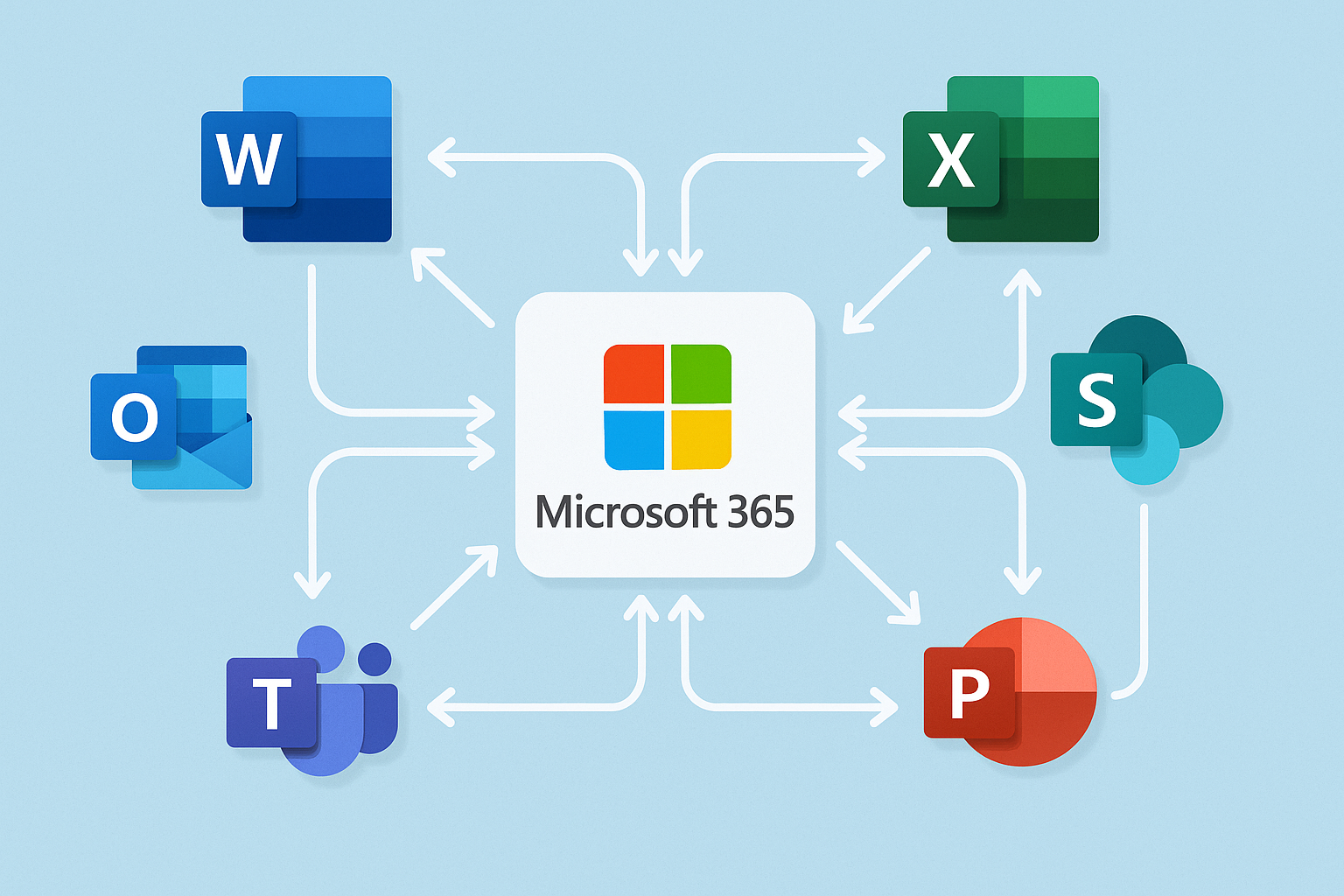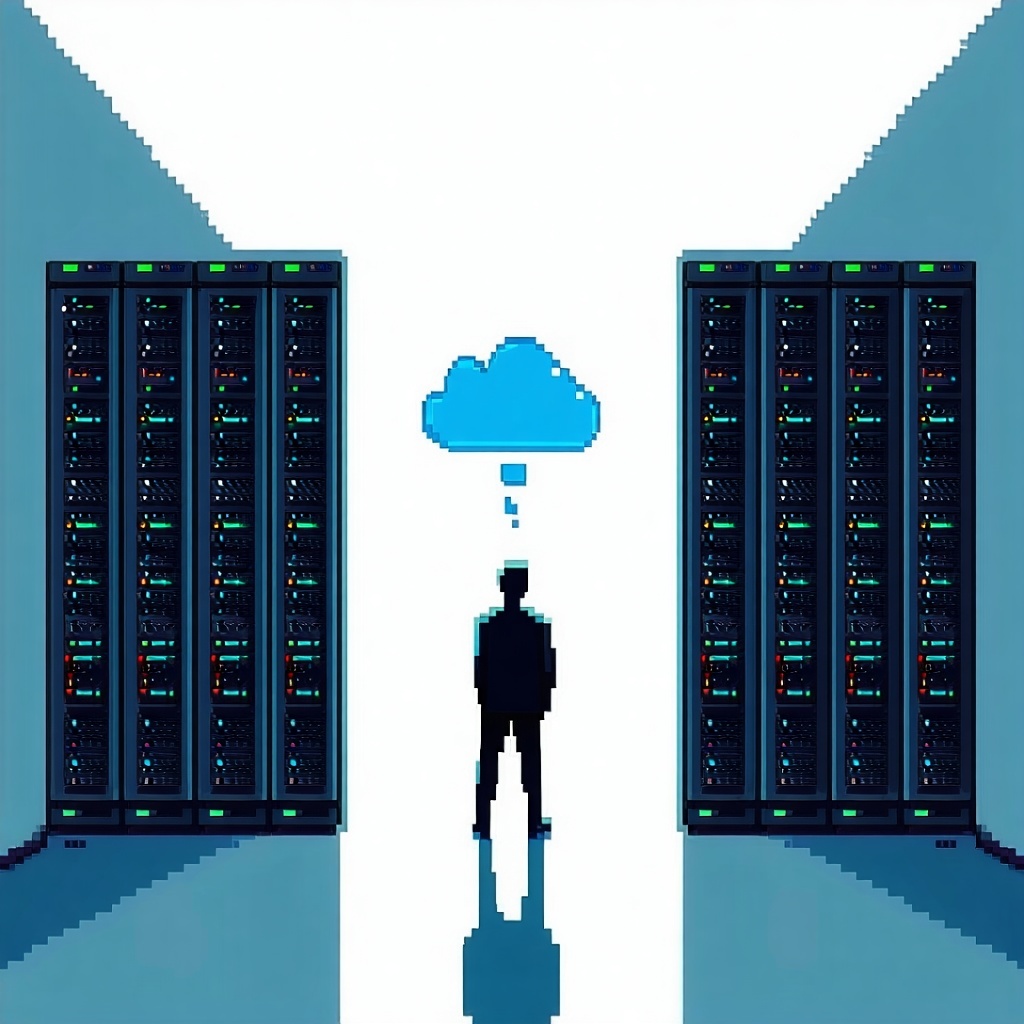
Do You Really Still Need Your Own Servers, or Is Microsoft 365 Enough?

We’ve reached a point where it’s time to seriously ask ourselves: Do we still need our own servers? Or can we move our entire IT infrastructure to the cloud, for example, using Microsoft 365?
This is a valid question. The world of work has changed: remote work, hybrid teams, mobile devices, and flexible processes have become the new normal for many. At the same time, demands on security, availability, and compliance are increasing.
This article provides clear guidance:
What functions do on-premises servers still fulfill? What can Microsoft 365 already handle? What costs, risks, and benefits do each option involve? And what should you consider if you're planning a transition?
What Servers Used to Do in Companies
For many years, having a local server was the central pillar of IT in many organizations. It handled key functions such as:
- File storage for documents, projects, images, etc.
- User management via Active Directory (AD)
- Email services via a local Exchange server
- Print server for integrating network devices
- Database and industry-specific applications within the local network
- Access rights and group policies for internal security
- Backups to NAS or external media
For many, this setup was non-negotiable. But now, powerful, flexible, and cost-effective cloud solutions are available that can replace – or even improve – most of these tasks.
What Microsoft 365 Can Replace Today
Microsoft 365 is far more than just Word, Excel, and Outlook. With the right plans (e.g., Business Premium), it offers a full-fledged, modern IT infrastructure for small and medium-sized businesses:
- OneDrive and SharePoint replace traditional file servers
- Exchange Online replaces the on-prem mail server
- Microsoft Teams replaces phone systems, file shares, and internal communication
- Azure Active Directory (Entra ID) replaces local AD
- Intune provides centralized device management and security
- Autopilot automates the provisioning of new workstations
- Power Automate / Forms / Lists digitize internal processes
- Security and compliance via MFA, Conditional Access, DLP, and more
Many tasks that used to require hardware and IT staff can now be handled efficiently from the cloud.
Comparison: Own Server vs. Microsoft 365 (Cloud Only)
|
Factor |
Own Server |
Microsoft 365 Cloud |
|
Setup Costs |
High: hardware, software, setup |
Low: license fees only |
|
Ongoing Costs |
Electricity, maintenance, updates |
Monthly subscriptions, no infrastructure costs |
|
Flexibility |
Limited, location-bound |
Accessible anytime, anywhere |
|
Security |
Your responsibility, variable setup |
High level via Microsoft, centralized control |
|
Availability |
Depends on local infrastructure |
99.9% SLA from Microsoft |
|
Maintenance |
Regular manual interventions |
Automated updates and management |
|
Scalability |
Slow and costly |
Fast, flexible, predictable |
|
Compliance |
Proof is your responsibility |
Microsoft-certified, GDPR-compliant (with setup) |
When Microsoft 365 (Cloud Only) Is the Smarter Choice
In many cases, Microsoft 365 is not only sufficient but the more intelligent solution:
- Your company is small to mid-sized
- You work remotely or in hybrid teams
- You don’t rely on complex, locally bound specialist software
- Your staff need secure and fast access to all data
- You don’t want to run or maintain servers yourself
With Entra ID, Intune, and Autopilot, you can even manage your entire IT centrally, including devices, policies, security rules, and user access.
What to Consider When Migrating
Migrating to a cloud infrastructure like Microsoft 365 should be carefully planned. Key aspects include:
- Analyze and migrate data structures: cleanly map folders and shares in SharePoint and OneDrive
- Define permissions and access: Who can do what, where, and when?
- Secure your cloud data: Third-party M365 backups are recommended (e.g., Veeam)
- Enable MFA & Conditional Access: Protect access with multi-factor authentication
- Plan Intune setup: manage devices, updates, apps, and security centrally
- Prepare Autopilot: automate provisioning of new devices
- Train your staff: explain new tools, build awareness
What It Means to Be Cloud-Dependent
If you fully commit to Microsoft 365, be aware: your entire IT infrastructure will be based on Microsoft’s cloud. That brings many advantages in terms of security, availability, and maintenance. It also means strong vendor lock-in.
If you use Microsoft 365, Azure AD, Exchange Online, SharePoint, Teams, Intune, and Autopilot, you’re opting for a deeply integrated platform. Technically, that’s efficient and convenient – but switching to alternative systems becomes more complex and costly.
Important:
It makes little sense to pursue an IT strategy based on independence while simultaneously running an entirely Microsoft-based on-premise setup. Even locally installed Microsoft systems result in vendor dependency, just without the flexibility of the cloud.
True digital sovereignty requires deep architectural understanding, transparent contracts, and, if necessary, hybrid scenarios with a clear exit strategy.
Where Is the Data? What About Data Protection and EU Compliance?
Many companies rightly ask: Where is my data stored – and who can access it?
In 2025, Microsoft officially announced its "EU Data Boundary" and new "Sovereign Solutions." The goal: to enable European companies to process and store all data entirely within the EU – including support and administration.
Additionally, Microsoft offers:
- Transparent control features for access and management
- Customer-controlled access keys (Customer Lockbox / DKE)
- GDPR compliance, certified by independent bodies
- Contractual guarantees supporting regulatory requirements
These developments are an important step toward digital sovereignty – especially for organizations with sensitive data or public mandates.
When a Local Server Still Makes Sense
There are specific scenarios in which a local server may still be the better option:
- You rely on industry software that only runs locally
- Legal regulations require local data storage (e.g., in regulated industries)
- You work with massive data volumes (e.g., video, CAD) and need high transfer rates
- Your internet connection is unstable or slow
- You want to keep certain systems in-house for strategic reasons
A hybrid solution is also possible – for example, using a local Active Directory linked to Microsoft 365 and Azure AD.
Conclusion
The real question is no longer: “Cloud or server?”
But rather: “What brings the greatest value to your business, with manageable effort and high security?”
For many small and mid-sized companies, Microsoft 365 is now a full alternative to owning servers. It’s flexible, secure, scalable, and cost-effective.
What matters most: implementation must be professionally planned, executed, and supported. Only then can the cloud realize its full potential.
Time to Act
Are you still using on-premises servers, or thinking about switching?
Let’s analyze together which IT setup fits your business best.
I’ll guide you from your current state to a finished solution.


